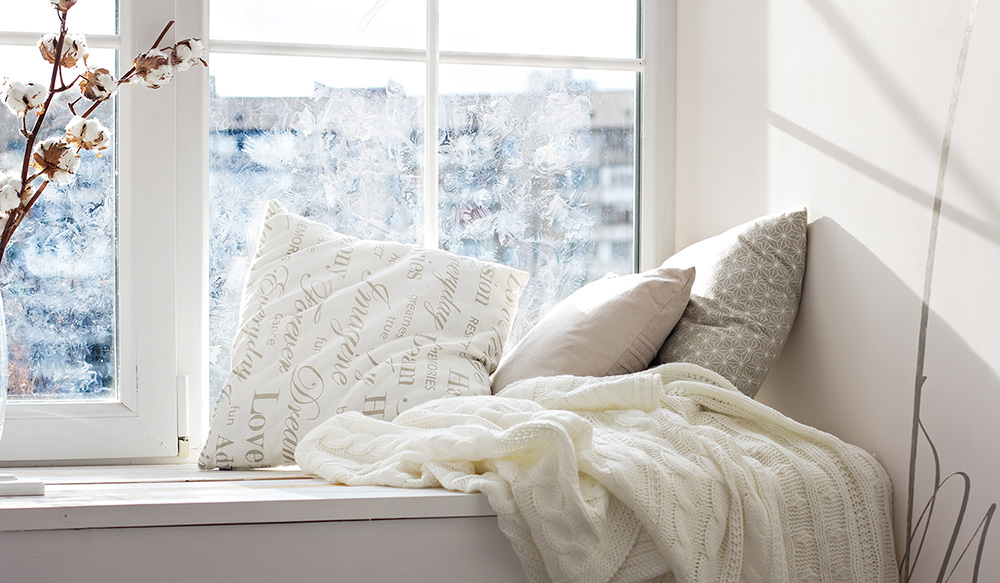As the temperatures cool and the leaves change color, it’s time to face the inevitable: winter is on its way. Is your home ready? Here are a few ways to prepare for the coming months.
1. Make adjustments to air flow.
Changing seasons mean changes to your home's air flow. In winter we want to pull warm air down, since it naturally rises. Reversing your fan blades to push air down will help circulate heated air throughout the room and increase comfort, without having to increase the setting on your thermostat.
And don’t forget your air returns. Most homes have two air returns on the wall. In the colder months, you want the warm air that rises to the ceiling to be pulled downward where you can enjoy it. You can accomplish this by closing the top return and leaving the bottom one open. (If your returns don't have levers for opening and closing, most home stores sell return-sized magnets to seal the opening for a season).
2. Protect air quality.
You’re sealing up your home and preparing to spend a few months indoors. Naturally, this is a good time to think about air quality. Do you have a functioning carbon monoxide detector? Are your smoke alarm batteries fresh? If you have an air purifier, is it clean and well maintained?
If you don't already have one, consider installing a humidity gauge and using a humidifier (cleaned regularly to prevent mold or bacteria growth) to keep the moisture level in your home comfortable for asthma and allergy sufferers.
3. Prep your heating system.
No matter what method you use to heat your home, it’s important to make sure your system is clean and ready to run so you’re not left shivering in the deep freeze. Have heat pumps or furnaces serviced by an HVAC contractor. If you burn wood or pellets, get those chimneys cleaned, and check fireplace dampers. And if you’re storing firewood, remember to stack it in a dry place away from your home to prevent insect damage.
4. Check the dryer vent.
Before a breathtaking snowfall blankets the ground, delightfully obstructing you from exterior access to your dryer exhaust tube and vent, take a few minutes to check these parts for accumulating lint and debris. You’ll be glad you did when those soaked snow suits need a warm-up.
5. Fix drafty doors.
Can you see daylight around the edges of your front door? Feel a draft slipping through the cracks? Sounds like you need new weatherstripping. Remove the old and bring a piece to your local home store to get something new that will work.
6. Prevent frozen pipes.
Don’t forget to drain and store those garden hoses. Make sure your spigots are clear of air and water, and capped. And if you leave town overnight, remember to keep your thermostat set to at least 55 degrees to prevent freezing pipes.
7. Increase attic insulation.
Ever wonder why fresh snow melts off one neighbor's roof quickly, but sits on another's roof for weeks? The most likely cause: insulation. Attics that are not adequately insulated allow warm air to escape the living spaces below and heat up the roof. Not only does this decrease energy efficiency, it can also lead to the formation of icicles. If this describes your home, consider adding additional insulation upstairs to keep your home warmer and save on heating costs.


